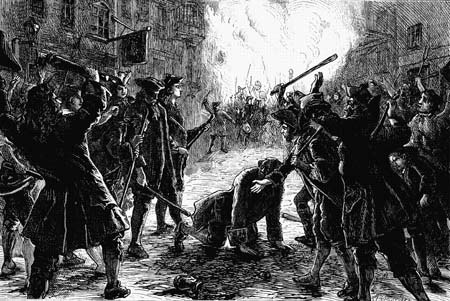Blog
Occasional posts on subjects including field recording, London history and literature, other websites worth looking at, articles in the press, and news of sound-related events.
Mug-house riots and a short history of hissing
LAST YEAR I had to do jury service at Southwark Crown Court for cases involving an incompetent pickpocket (adjourned for background reports), an alleged paedophile (not guilty), and a fraudster (guilty, nine months and recommended for deportation).
If you get called up for jury service, then look forward to long periods of waiting around and a few jolts of genuine high drama. But until then, real people from London’s past can stand trial in your own little courtroom of the imagination thanks to The Proceedings of the Old Bailey. It’s one of the best online history resources around.
One case from 1716 is full of fascinating detail about the sounds of political violence in London. Pro-Hanoverian Whig factions had established drinking dens called mug-houses from which they fought fist and boot with Jacobite mobs in the early 18th century. These clashes became known as the Mug-house Riots. Walter Thornbury’s 1878 book Old and New London has an engraving of one such battle:

An attack in 1716 on the Roebuck mug-house at Cheapside led to the trial of Robert Read, accused of killing one Daniel Vaughan with a blunderbuss. Instances of slogan-shouting and other sounds of conflict feature prominently in the accounts of the witnesses.
Alcohol and public disorder are inseparable twins in English culture. As the shopkeeper Katherine Bennet testified:
Richard Newell had been sent on an errand that day, but was drawn out of curiosity to watch the turmoil instead:
The proclamation was likely a reading of the Riot Act, passed by Parliament in 1714. One curious sound-feature is mentioned in the statement of John Boyles:
Hissing as a way of expressing hostility now only survives in a humorous form among pantomime audiences. Its long association with the theatre goes back to at least the 17th century, and probably has its origins in the story of Satan taking a snake’s form in the Garden of Eden.
The French playwright Jean Racine wrote bitchily in his epigram The Origin of Hissing that the practice began when Bernard le Bovier de Fontenelle’s play Aspar flopped on stage in 1680. “I should know, I was in it,” Racine claimed. However, Samuel Pepys noted an incident of audience hissing at a theatre in July 1661:
Hissing became such a well-established habit that the right of audiences to hiss entered English common law in the case of Clifford vs Brandon in 1810. Justice Mansfield ruled:
The USA had to wait nearly 100 years until a Boston magistrate set a similar precedent in 1903. But that didn’t help New Yorker Paul Kulikoff in 1917, who hissed a Russian war film at the Strand Theatre. A probation officer told the court that Kulikoff’s lodgings in East Twelfth Street were ‘barren of everything but a mass of literature on anarchism’, and he was sentenced to six months in the workhouse for disorderly conduct.
ABOUT SOUND
FIELD RECORDINGS
The balloonist in the desert is dreaming
The Binaural Diaries of Ollie Hall
GEOGRAPHY AND WANDERINGS
The Ragged Society of Antiquarian Ramblers
LONDON
ORGANISATIONS
Midwest Society for Acoustic Ecology
World Forum for Acoustic Ecology